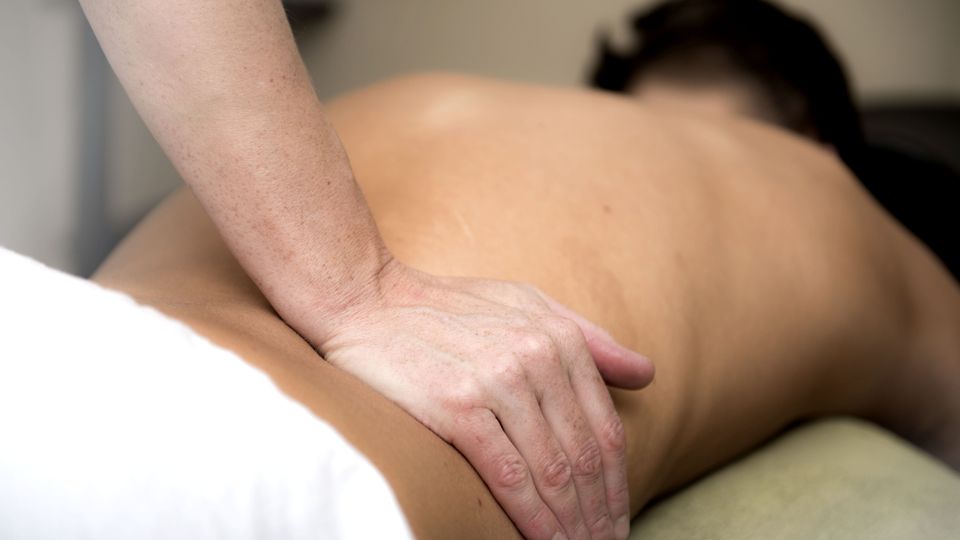Issue 13 Blue Crab Edition - Those Lying Researchers, How to Thrust the Hip, and Life with Concussion

98% of Researchers Are Liars.
The Gist - This unsettling piece from the Archives of PM&R covers the spin found in journal abstracts and what we should be doing about it. Just like I spun that headline to make this way more dramatic, 98% of low back pain trial articles reviewed by these researchers spun some portion of their abstracts. Yikes. That doesn’t mean they’re all bad, but it does show some serious problems with our current state of LBP trial publishing.
The researchers had a 7 point “spin checklist” (full list below) to see what had been left out by authors seeking to show their data in a better light. Of these, all are important, but only a few are worrying. For example, 62% of abstracts had “overenthusiastic interpretation of statistically nonsignificant primary outcomes results as effective.” That’s dangerous, as it can spread misinformation about a treatment that’s not actually backed by the stats. Meanwhile, 63% had a “focus on statistically significant outcomes other than the primary.” This isn’t great, but not terrible either.
So next time you’re looking at a journal article, maybe actually read the darn thing? I know, that’s why you come to PT Crab, so you don’t have to do it yourself, but you should. I’ll find the interesting and important articles, but you’d better read them before you put them into practice. EBP isn’t just a class you hated in school, it’s a method of practice our profession requires to succeed. Read the E and do the P.
Tell Me More - It doesn’t get any happier in this section. First though, here’s the full checklist they used and scored Yes/No to check for spin:
- Omission of primary outcomes
- Fail to mention adverse events of interventions
- Selective reporting of positive results and omission of negative results of primary outcomes
- Fail to report statistically nonsignificant primary outcomes
- Focus on statistically significant outcomes other than the primary
- Overenthusiastic interpretation of statistically nonsignificant primary outcomes results as effective
- Recommendation of a treatment without a clinically important effect on primary outcomes
This problem goes beyond abstracts. 68.5% of full texts failed to mention the adverse effects of their interventions and 49% didn’t report statistically nonsignificant primary outcomes. It’s a yikes parade.
What can you do about it? Start by reading whole papers when you’re investigating a new treatment method. They’re tedious, but we’ll be putting up a how-to guide on PTCrab.org soon to help you speed through the worst parts of any paper and focus on the good stuff. I’ll let you know when it’s published. After you read the whole paper, read another one about it too. If there aren’t two papers, maybe the intervention is too young to use? Just a thought, use your clinical judgment.
What else can you do about it? Encourage any researchers you know to stick to the CONSORT statement and make sure every bit gets in the paper. Email journal editors and ask what they’re doing about this problem (they’re starting to get annoyed at me, maybe you’ll do better). Be suspicious of all research you read and make sure it’s backed up by good, complete evidence before you let it change how you practice. Again, I know you use PT Crab cuz you don’t have the time for this and I do my best to ensure all that I’m giving you is gold, but click through and actually look at these papers if they interest you. I can see how many people hit ‘dem links and it’s not many. Be the change. Click through and read the papers.
I’m convinced! I’ll read the paper!Oh. No, I didn’t mean this one. It’s all technical and difficult and stuff. Save your energy for the next one, trust me. But if you really want it, it’s here.
A Powerful Hip Thrust
The Gist - This cool RCT comes from the journal of MSK Science and Practice, trying to figure out just how hard you need to thrust that hip when you’re doing mobes on patients with OA. Turns out that (like most things) it depends. But they found good info for each case.
They split 60 patients with hip OA into three groups, low-force mobe, medium-force mobe, and high-force mobe and blinded patients and assessors to their allocations (yay!). Each patient got three sessions of hip distraction mobes with a dynamometer to measure the force applied. Here are the highlights: the high and medium-force patients gained statistically significant RoM in all planes while the low force did not. All three groups reduced pain by approximately 1.5 points on VAS.
Tell Me More - So what is a low, medium, or high force mobe? They used a dynamometer for this, and had forces of 26 N for low, 51 for medium, and 69 for high. Which, I know, doesn’t mean much to you, a regular person without force sensors in your hands. Here’s what the paper said about the forces:
A force in the slack zone, before the slack is taken up (slack taken up) was applied in the low-force mobilization group. A force until the examiner felt a marked resistance (first stop) was applied in the medium-force mobilization group. A force that exceeded the first stop stretching the soft tissue surrounding joint was applied in the high-force mobilization group.
That should be enough to guide you when performing this at home.
The real gold here is the information about how much force is required to increase RoM. It’s fantastic news that all three reduced pain in an immediate post-treatment survey, but even better that we now have data about how much force you need to increase RoM. The paper has full data about the RoM changes, I just didn’t detail it here because there is a ton. They measured all planes after all. Give it a look yourself though, it’s gold Jerry, gold.
Where’s that paper with the data then? Right here in all its open access glory.
Life with Concussion
The Gist - This very short editorial from the BJSM is essential reading if you ever work with concussed patients. There’s no directly clinically applicable information in it, but it’s full of info that practitioners need to know about what goes on inside the mind of the concussed. If you’re not yet convinced to take three minutes to give it a read, I’ll paste in a few quotes here:
Four weeks later, driving home from work early oneday due to a migraine, it suddenly hit me that things were not right. I broke down crying but could not grasp why I felt so emotional. I felt like I was fighting a silent battle with no obvious physical injury which would allow me to explain my emotions to others. I kept this from everyone closest to me, spiralling into a dark hole.
And one more:
They recommended rest, offered me antidepressants to improve my mood and anti-anxiety medication to improve the anxiety I had started to experience, but, for me, these did not help. I felt helpless and alone with no one really knowing, nor understanding, what I was going through.






Comments
Want to leave a comment and discuss this with your fellow PTs? Join PT Crab and get summarized PT research in your inbox, every week.